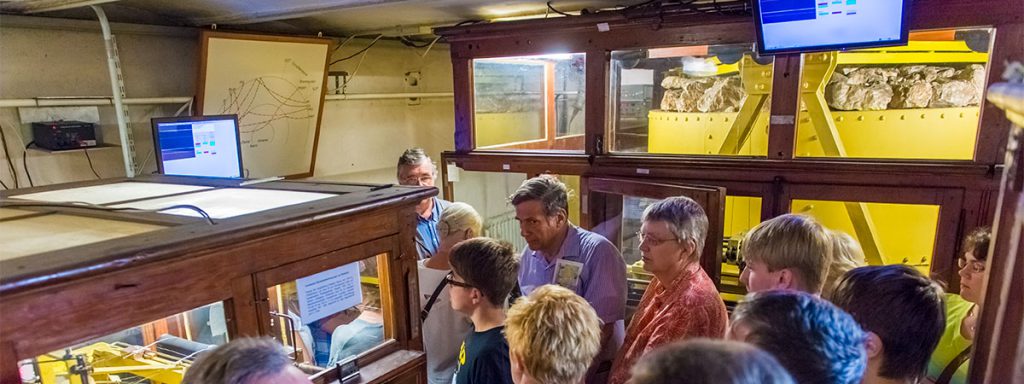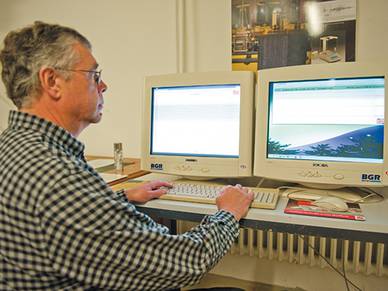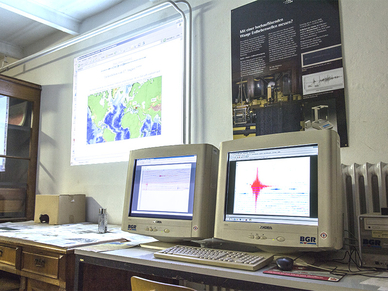
Modern seismometer
with the broadband seismometer STS-2 in the digital age
The New Seismograph Vault houses a modern broadband seismometer STS-2.
The STS-2 broadband seismometer developed by Wielandt/Streckeisen is the standard seismometer used at the GRSN stations (GRSN = German Regional Seismic Network). It consists of three identical sensors that are arranged at an angle of 120°. The measuring directions correspond to the edges of a cube, the space diagonal of which is oriented vertically. The forces resulting from the accelerations are compensated by capacitive (non-contact) displacement transducers with a feedback system, producing an output signal of max. 40 V.
Analogue signals converted into digital
The sensor signals are converted by electronic coordinate transformation into two horizontal (x, y) and one vertical (z) components. This special housing design and the full encapsulation significantly reduce thermal and barometric interferences. The analogue signals are transmitted to the Q4120 data acquisition system by the company Quanterra, which is often referred to as ‘Pumpkin’ because of the orange colour of the housing. This system has the task of digitising the analogue seismometer signals, synchronising the data with the time of a DCF-77 receiver (time signal transmitter) and then compressing the data, storing it in the local memory for a certain period of time and transmitting it to the computer via a communication interface.
The data is digitised at a resolution of 24 bit and a sampling rate of 80 Hz. The ‘Pumpkin’ is additionally used for signal detection, function monitoring and calibration of the STS-2. Communication with the computer takes place via fibre optic channels.




